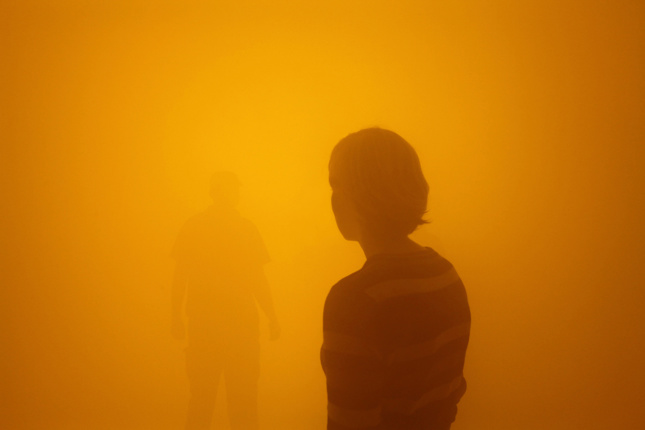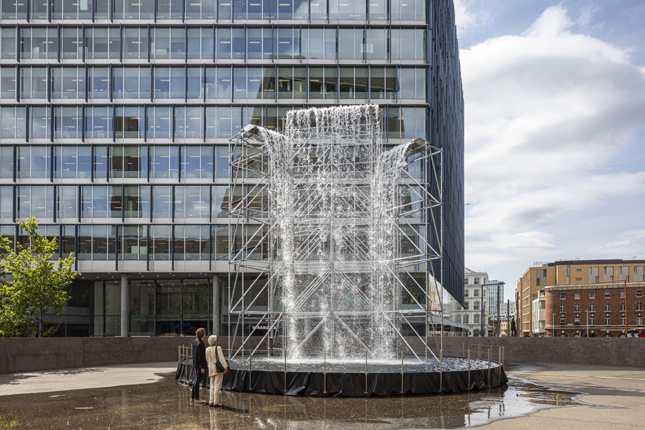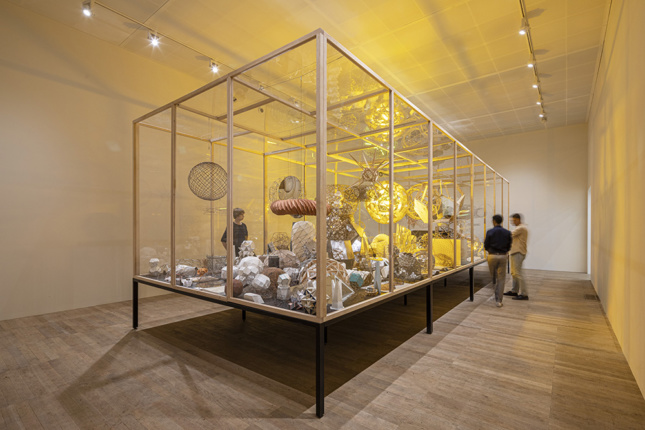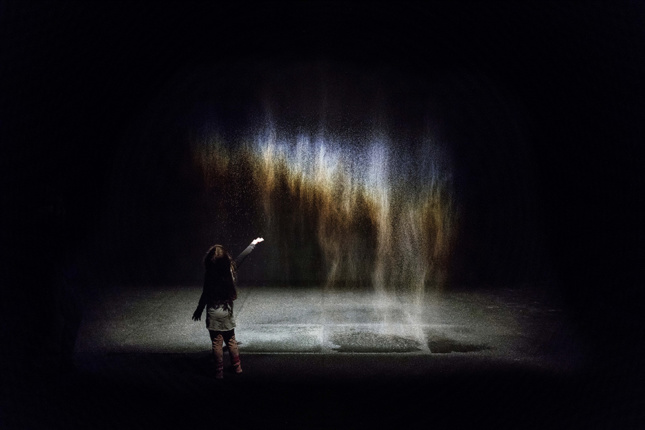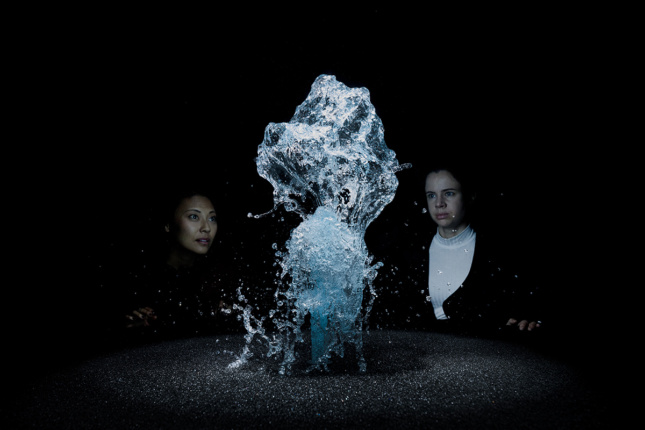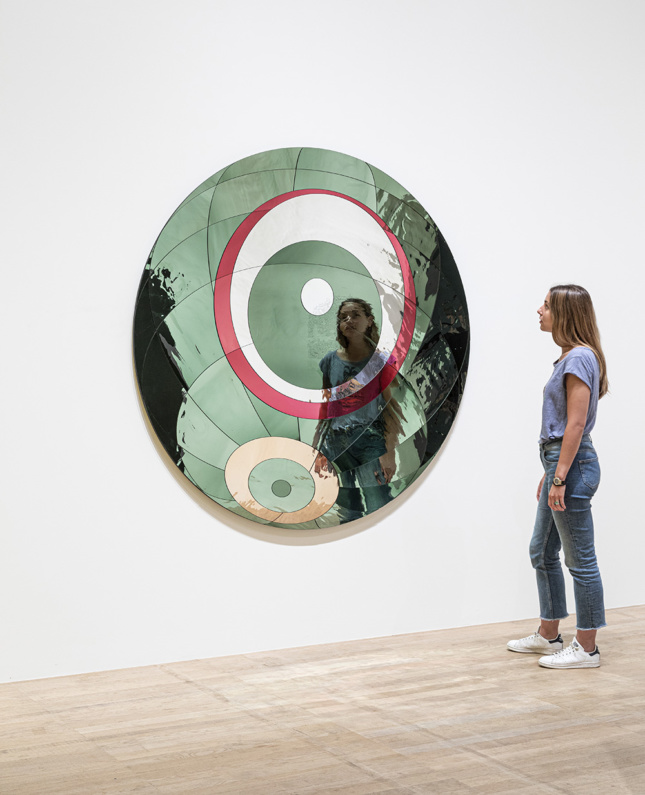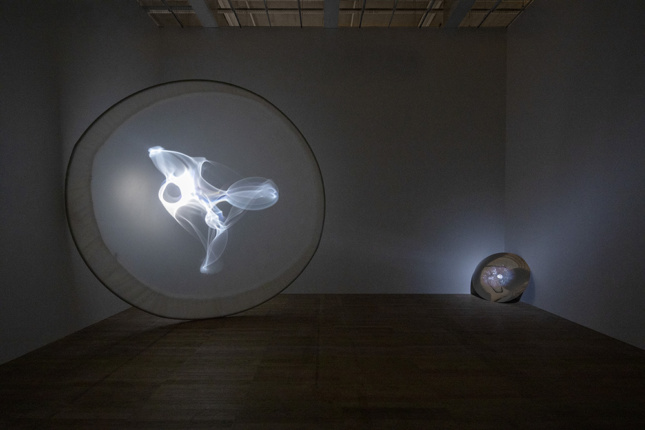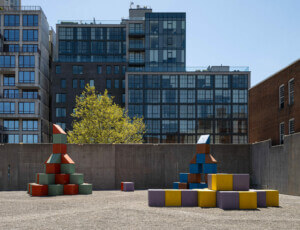I know it rains a lot in London, but you have to wonder if Olafur Eliasson is playing a joke—the Danish-Icelandic artist has installed a “Rain Window” (Regenfenster, 1999) inside the Tate Modern just as summer begins. Eliasson has previous experience when it comes to playing with the weather in England. In 2003, The Weather Project illuminated the Tate’s Turbine Hall with a miniature “sun” to create a sunset-like haze in the former power station and attracted some two million visitors. Sixteen years on, Eliasson is back.
Olafur Eliasson: In Real Life, the Tate Modern’s latest retrospective of the artist, pulls together 38 works dating back to 1990 through to today. While none are as exhilarating as the 2003 show, however, Eliasson is still able to able to tantalize the senses.
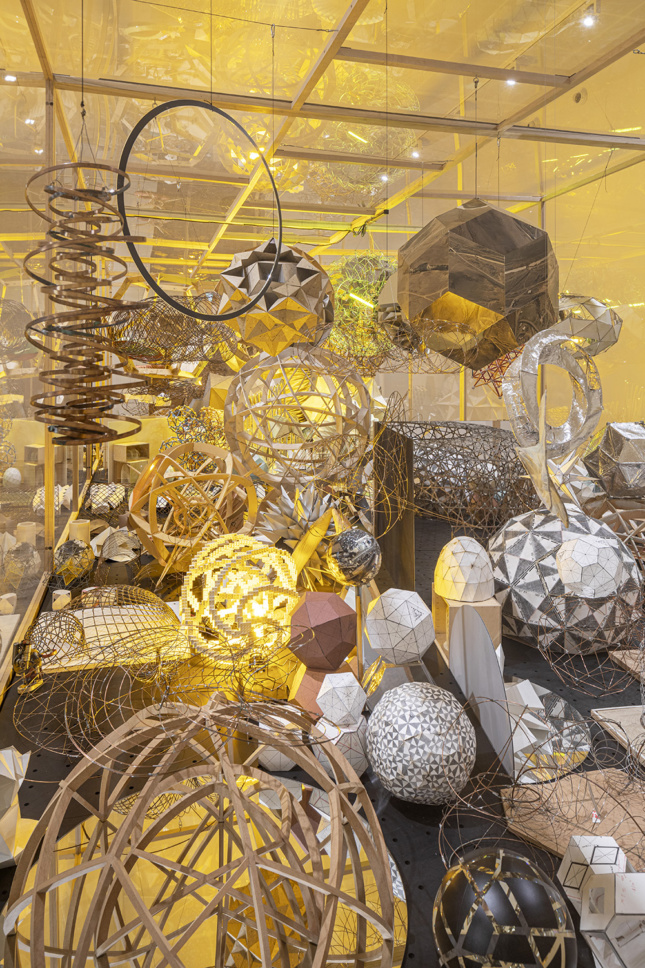
Fitting that many of Eliasson’s works into one exhibition was no mean feat, and not all of them can be found inside. Waterfall, from 2019, is the most impressive, and as its name suggests, water cascades down from a 36-foot-tall scaffold structure. It seems like an informal emphatic start. It’s odd then, that In Real Life actually begins inside passed ticketed doors with a glass box of geometric models. The work, Model Room, collates some 450 models, the result of Eliasson’s collaboration with Icelandic artist, mathematician, and architect Einar Thorsteinn. They’re not bad by any stretch, but this isn’t the stellar stuff one expects.
Thankfully more, much more, in fact, lies around the corner. Audiences are encouraged to touch—but not grab—a giant wall of Scandinavian moss stretching 65 feet. The work dates back to 1994 and presumably, new moss has been installed. Here we find the aforementioned Regenfenster too, though, if you didn’t know it was a work dating back to 1999, it could easily be mistaken for a leaking pipe (Now that you’re in the know, keep an ear out for people questioning: “Is it really raining outside?”).
In the same room is The Seeing Space, a circular viewing portal nestled into a wall which lets viewers approach and peer into a room of what seems to be nothingness. Walk around though, and it’s revealed that The Seeing Space is a ruse, another Eliasson joke, for one’s face is focused in on and unflatteringly framed on the other side. As a result, you have to immediately go back and ask someone to film you, to see just how embarrassing it was. It’s not going to be good.
This is what Eliasson is best at, creating stuff that’s fun, and there’s more of that to come, as squeals of delight from around the corner forewarn us of. The sound, you find out, is of children running through shimmering heavy mist that has had a spectrum of color projected onto it. The work is called Beauty, with good reason, and is for anyone daring enough to let go of their apprehensions and enjoy themselves at the cost of getting mildly damp.

More interactive art follows. Your Blind Passenger, the exhibition’s pièce de résistance (if fellow visitors’ Instagrams are to tell us anything), is a 130-foot-long journey through dense fog. It’s certainly visceral—you can only see five feet ahead—and along the corridor, the fog’s color gently changes from white to yellow and finally blue. While other exhibits are best enjoyed with a partner, it’s best to experience the passage alone to get the full feeling of discombobulation. In Eliasson’s native tongue the work is called Din Blinde Passager, the Danish term for a stowaway, for who captivity in the artist’s work is pretty sweet, literally so; the fog vapour is sugar-based.
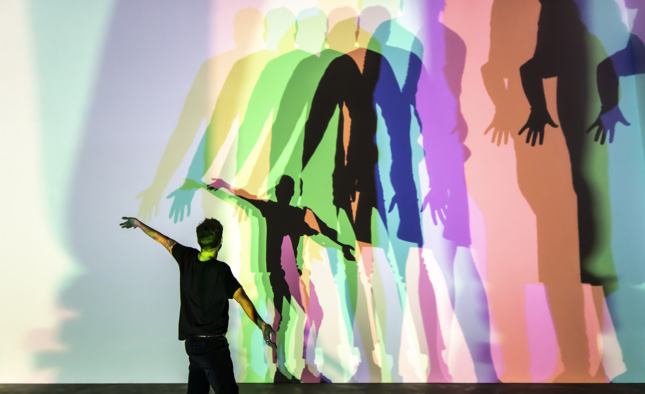
Your Blind Passenger is from 2010, the same year Eliasson produced Your Uncertain Shadow (Color). More fun for the young and young at heart is on display here: dance in front of an array of colored lights to see your silhouette, duplicated and overlapped in pastel hues. Unlike Your Blind Passenger, this piece seems to scream the more the merrier.
Aside from that, the rest of the works follow the tone set by Model Room. Mirrors have been cleverly used in a few, such as Your Planetary Window—another portal in a wall, which you can see yourself in. Big Bang Fountain is also noteworthy; the 2014 work is set in a black room and harder to navigate than Your Blind Passenger, and uses flashes of light to illuminate bursts from a small water fountain. Don’t bother trying to take a picture on your phone, and don’t dare use a flash.
In Real Life doesn’t dazzle with every turn, but for the moments of genuine playfulness and engagement, the show is well worth it. Olafur Eliasson: In Real Life runs through January 5, 2020.






